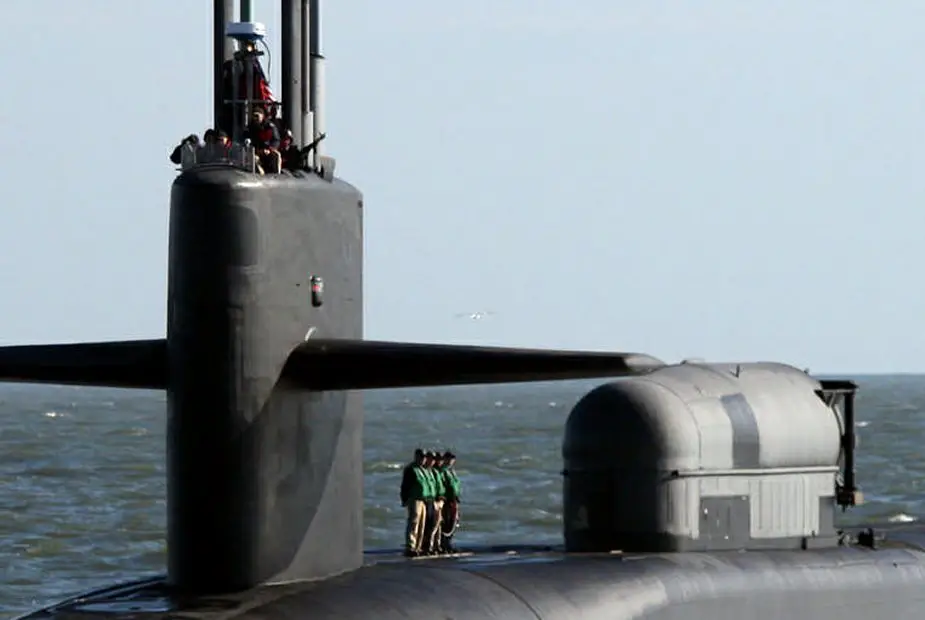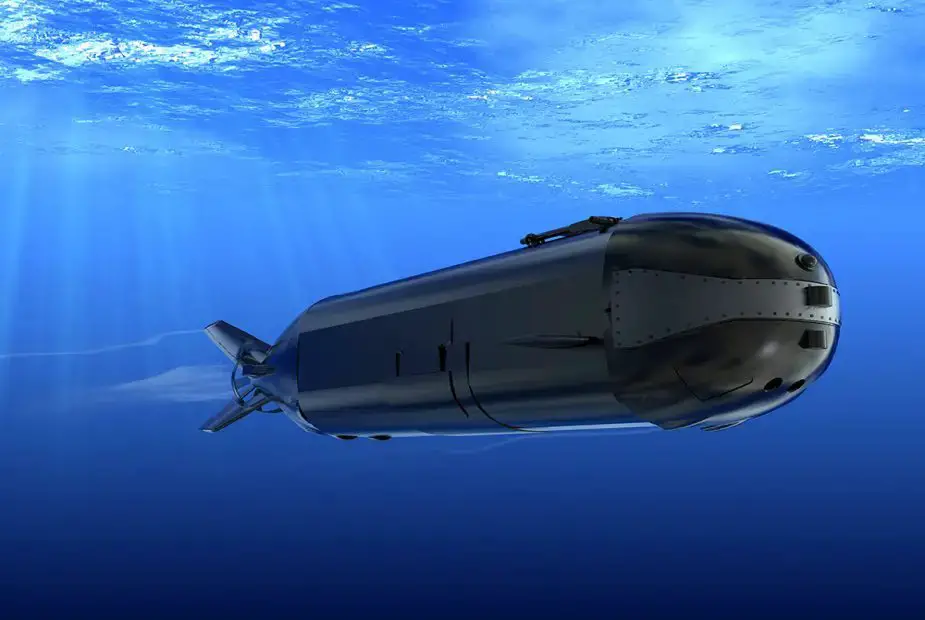Exail, the French shipbuilding company, is spearheading a revolution in underwater special operations with the introduction of the swimmer delivery vehicle PSM3G (Propulseur sous-marin de 3ème Génération) swimmer delivery vehicle. This groundbreaking addition to the Barracuda-class submarines is specifically designed to cater to the requirements of marine commandos, thereby significantly enhancing the capabilities of the French Navy's special forces.
Follow Navy Recognition on Google News at this link
 On 27 July, the French SSN Suffren crossed the Suez Canal with a DDS (dry deck shelter) system. This removable module was specially developed for the French Navy's commandos. (Picture source: LUCIOAndrea3 Twitter)
On 27 July, the French SSN Suffren crossed the Suez Canal with a DDS (dry deck shelter) system. This removable module was specially developed for the French Navy's commandos. (Picture source: LUCIOAndrea3 Twitter)
Since World War II, France has been among the primary users of naval special forces and Swimmer Delivery Vehicle (SDV) capabilities. However, budgetary constraints and external commitments led to a gradual loss of this capability over time. The retirement of the Agosta-class submarines in 2001 marked a major turning point, resulting in the loss of global SDV capabilities.
Presently, French special forces like the Commando Hubert and the DGSE have had to rely on a single-person submersible, the Stidd DPD. However, with the future introduction of the Barracuda-class submarines, the French Navy will regain its SDV capability. These submarines are designed to carry a larger Dry Deck Shelter, allowing divers direct access when it is dry, providing a significant operational advantage.
Dry Deck Shelter
The DDS is approximately 11 meters long, 3 meters wide, and weighs around forty tons, securely fixed to the rear of the submarine. Its robust construction ensures it can withstand the immense pressures at the depths where the Barracuda-class submarines operate. During transit and preparation periods, the interior of the module will be kept dry, and the commandos will access it through a connecting airlock from inside the submarine.
One of the key advantages of the DDS is its ability to facilitate the deployment of commandos with ease, surpassing the traditional torpedo tube method. When the submarines are submerged, the hangar will be flooded to allow the seamless release of equipment and personnel. The DDS will be enveloped in a composite fairing, carefully designed to maintain the submarine's hydrodynamics and stealth, ensuring minimal disruption to the vessel's overall performance.
The Dry Deck Shelter's versatility enables it to accommodate various payloads, including drones and the cutting-edge PSM3G (Propulseur sous-marin de 3ème Génération) system. This integration allows the submarines to carry and launch a wide range of equipment, providing unprecedented capabilities for marine commandos in special operations and reconnaissance missions. The development and implementation of the DDS underscore Exail Group's commitment to pushing the boundaries of maritime technology and empowering naval forces to execute missions with greater efficiency, precision, and security.

Dry Deck Shelter of USS Georgia (Picture Source: Wikimedia)
PSM3G
The new SDV, which will equip the upcoming SDV for the Commando Hubert, is the SWUV (Special Warfare Underwater Vehicle) by Exail, also known as PSM3G in the French forces. It measures approximately 8.5 meters long and can carry six men, offering a larger and more powerful capacity than previous French SDVs. Unfortunately, little information is available about these French SDVs.
Let's focus on an American SDV currently under construction by Lockheed Martin to illustrate our point and provide more information.
The Dry Combat Submersible (DCS) is a submarine currently undergoing testing for the Navy SEALs. It is equipped with inertial navigation systems, Doppler velocity measurement, sonar, and a fathometer. With a dry interior, it allows for extended missions in colder waters. The DCS measures 12 meters long, 2.4 meters wide, and high, with a total weight of 14 tons (31,000 pounds) when loaded and a displacement of 28 tons (62,000 pounds). Transportable in a standard 40-foot shipping container, it can accommodate a crew of two and eight fully equipped Navy SEALs. Its maximum depth is 100 meters (330 feet), with an operational depth for insertion and recovery of 30 meters (98 feet). Its batteries provide a range of 60 nautical miles at a speed of 5 knots. The maximum speed is not public, but its endurance of over 24 hours exceeds that of the current SEAL Delivery Vehicle and the Shallow Water Combat Submersible with which it will operate.

Dry Combat Submersible (DCS) 1 of Lockheed Martin (Picture Source: Lockheed Martin)
Equipped with the DDS, the Barracuda-class submarines are poised to become a formidable force on the high seas, delivering unmatched flexibility and potency for the French Navy. As the PSM3G ushers in a new era of underwater special operations, the Exail continues to solidify its position as a leading innovator in the global maritime defense industry. The first Dry Deck Shelter-equipped Barracuda-class submarine is scheduled to be qualified later this year, promising a paradigm shift in naval warfare capabilities for France and its allies.



